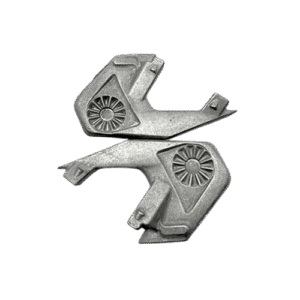precision forging for stainless steel components
Forged Steel Components: A Comprehensive Guide
Introduction
Forged steel components are critical parts known for their superior strength, reliability, and durability. They are essential in industries where failure is not an option. This guide explores everything you need to know about forged steel components, from the materials and manufacturing process to their vast applications and how custom solutions can meet your specific needs.

What Are Forged Steel Components?
Forged steel components are metal parts shaped through the process of forging, which involves applying compressive forces to deform steel into a desired shape. This process aligns the steel’s grain structure, resulting in exceptional mechanical properties, including high impact strength, toughness, and fatigue resistance. Unlike cast parts, forged components have a continuous grain flow, making them less prone to porosity, cavities, and other internal defects.
Common Carbon Steel Materials for Forging
Carbon steel is a popular choice for forging due to its excellent strength and cost-effectiveness. The primary types include:
Low Carbon Steel (Mild Steel): Contains up to 0.3% carbon. It is highly ductile, easily machinable, and suitable for applications not requiring extreme strength.
Medium Carbon Steel: Contains 0.3% to 0.6% carbon. It offers a good balance of strength and ductility and can be heat-treated to enhance its properties. It’s commonly used for automotive and machinery parts.
High Carbon Steel: Contains 0.6% to 1.0% carbon. It provides very high strength and wear resistance but is less ductile. It is often used for cutting tools, springs, and high-strength components.
Alloy Steels: While not purely carbon steel, these are steels where other elements like chromium, nickel, and molybdenum are added to carbon steel to enhance specific properties like hardenability, corrosion resistance, and strength at high temperatures.

The Forging Process for Steel Components
The forging process is a skilled craft that transforms a simple steel billet or ingot into a high-performance component. The main steps include:
Heating: The raw steel material is heated to a precise temperature in a forge furnace (typically between 1,100°C and 1,300°C for carbon steel) to make it malleable.
Forming (Deformation): The heated steel is placed on a die and shaped using immense pressure from a hammer or press. There are two primary methods:
Open-Die Forging: The steel is shaped between flat or simple-shaped dies, allowing for large and simple-shaped components.
Closed-Die Forging: The steel is pressed into a pair of dies that contain a precut profile of the desired part, ideal for complex and high-precision components.
Trimming & Finishing: After forging, excess material (flash) is trimmed away. The component may then be shot blasted to clean its surface.
Heat Treatment: The forged part is subjected to controlled heating and cooling processes (like annealing, normalizing, or quenching and tempering) to achieve the desired mechanical properties, such as hardness and toughness.
Inspection & Testing: The final component undergoes rigorous quality checks, including dimensional verification, ultrasonic testing, and mechanical property testing, to ensure it meets all specifications.
Key Industries Using Forged Steel Components
Due to their unmatched reliability, forged steel components are indispensable in demanding sectors:
Automotive & Transportation: Crankshafts, connecting rods, axle beams, and transmission gears.
Oil & Gas: Valves, flanges, wellhead equipment, and drill bits that must withstand high pressure and corrosive environments.
Aerospace: Critical structural parts, landing gear components, and turbine discs where safety is paramount.
Heavy Machinery & Construction: Gears, shafts, and buckets for excavators and bulldozers.
Power Generation: Turbine blades, generator shafts, and high-pressure fittings in nuclear and fossil fuel power plants.
Agriculture & Mining: Durable parts for tractors, plows, and earth-moving equipment.
Key Considerations for High-Quality Forging
Material Selection: Choosing the correct grade of steel for the application is the first and most crucial step.
Heating Control: The steel must be heated uniformly to the correct forging temperature. Under-heating causes internal stresses, while over-heating can damage the steel’s grain structure.
Die Design & Quality: The dies must be precisely machined to the component’s shape and must be robust enough to withstand the high pressures of forging.
Deformation Control: The speed and amount of deformation must be carefully managed to ensure proper grain flow and fill the die cavities completely without defects.
Post-Forging Heat Treatment: This is essential for relieving internal stresses and achieving the required hardness, strength, and toughness.
Custom Forged Steel Components: Built to Your Specifications
we understand that every project has unique requirements. We specialize in providing custom forged steel components tailored to your exact needs.
Custom Shapes & Sizes: From simple to highly complex geometries.
Material Expertise: We work with a wide range of carbon and alloy steels.
Precision Tolerances: We deliver parts that meet your precise dimensional and mechanical specifications.
End-to-End Service: From initial design consultation and material selection to forging, heat treatment, and final machining.
Contact us today to discuss your project and get a quote for high-quality, custom-forged steel components.
